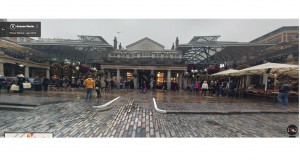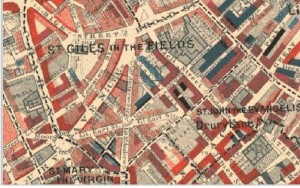The Covent Garden Market was known for being a noisy, lively market place in the Victorian era, where people from around the neighborhood would come to buy and sell various goods. The market itself has been a hub for purchasing fresh fruits, vegetables, and herbs for several hundred years and the surrounding church, pubs, and theaters also gives the square an array of activities and sights to see. However, the Covent Garden Market has not always been such a friendly place to take a trip to with the family. Ironically enough, the area used to be used for orchards for the Westminister Abbey and by the 18th century, the area became a well-known red-light district, attracting prostitutes, playwrights, and street performers. The area was quickly cleaned up and organized back to being a market place for the town. Although the site now serves as more of a tourist location, to this day people still continue to visit the cafes, pubs, and small shops the Covent Garden Market has to offer
- .Covent Garden Market map view for Victorian London
In the Sherlock Holmes story “The Adventure of the Blue Carbuncle” by Arthur Conan Doyle, Sherlock mentions and visits the Covent Garden Market. In the story, the characters are said to pass through the slums of Endell Street to get to the market place to hassle the salesman and find out where the goose with the precious gem came from. By using the Charles Boothe Online Archive, we as the readers can see that on Endell Street there are parts where poverty is prevalent and where thievery and criminal activities were more likely to happen.
The Charles Boothe Online Archive also shows us that the market place, as well as the surrounding area, are where the middle to upper class resided. This evidence along with the Old Bailey Proceedings, lead the readers to believe that because of this social class gap, criminal activity was very common around these parts.
Work Cited:
Doyle, Sir Arthur Conan. The Adventures of Sherlock Holmes. The Adventure of The Blue Carbuncle. Web. 8 November 2015. http://ignisart.com/camdenhouse/canon/blue.htm
Charles Boothe Online Archive. Web. 8 November 2015.http://booth.lse.ac.uk/cgi-bin/do.pl?sub=view_booth_and_barth&args=530156,180800,1,large,0
Locating London. Web. 8 November 2015. http://www.locatinglondon.org/index.html














